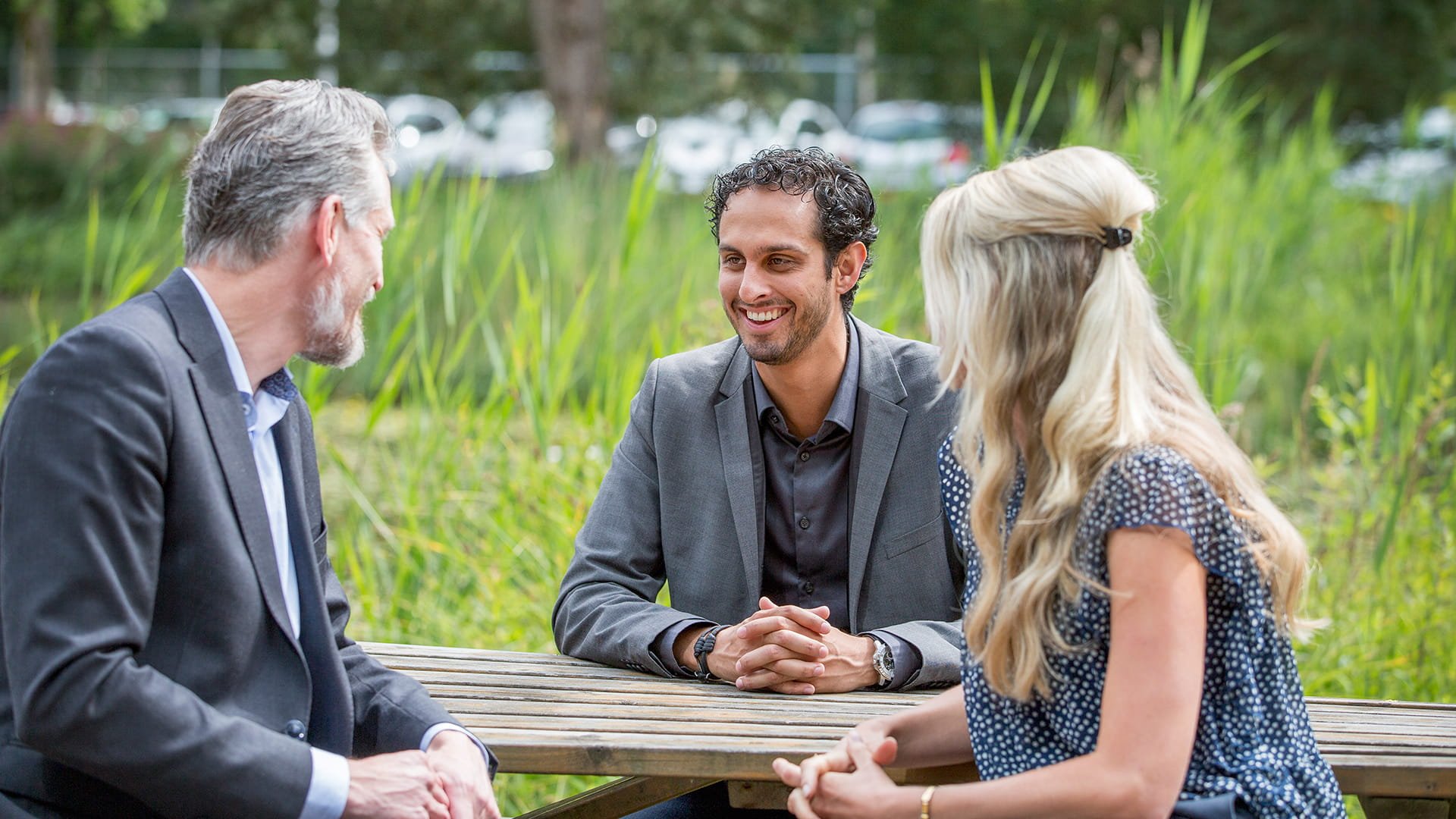When science meets instinct: improving port safety and operational efficiency through innovation
As Harbour Master, Captain Magee fulfils a role that goes back centuries; keeping port staff, visitors, and vessels safe. Digital innovations have made many parts of his task easier – but it remains a highly-skilled job. “When injuries happen at ports, it’s often during mooring operations [60% of them according to the European Harbour Masters’ Committee]. Bad weather makes everything harder too. That’s why it’s so important for us to seek smarter, safer and more efficient ways of doing things.”
Wim Maan agrees. As Team Leader at Port of Rotterdam’s Harbour Coordination Centre, he recalls how unforeseen conditions can quickly lead to dangerous outcomes: “Some years ago, we had a ship break loose from its moorings under high winds. I think most ports have a story like this – it can cause a lot of damage.”
Traditionally harbour masters relied on a mix of manually compiled data and the gut instinct gained from decades as mariners, to ensure safety of navigation in ports.
But Captain Magee and Wim Maan have been part of an innovation journey with RAK Ports, the Port of Rotterdam and engineers at Royal HaskoningDHV which will add technology to the mix, allowing science and instinct to seamlessly combine.
From South Africa to Amersfoort
“The idea isn’t all mine, I must say!”Bas van Son is talking over video call from the Amersfoort offices of Royal HaskoningDHV, where he is the Product Director of Smart Mooring – a live application using real-time data and metocean forecasts to help ports make sharper, safer mooring decisions.
Bas is modest, but the story of Smart Mooring begins with him, incorporating his student internship in South Africa “I used a single camera and image tracking to map vessel movements – back in 2009, it was quite promising!” – and his time (over a decade) at engineering consultancy, Royal HaskoningDHV, where he honed the work he’d started in his studies.
“I joined the maritime team [in 2010] on coastal engineering and port projects where I did, amongst other things, Dynamic Mooring Analysis (DMA). We’d analyse the behaviour of moored ships and how waves and wind affect them – providing reports or designs to help minimise dangerous situations and improve efficiencies.”

A seed finds fertile ground
The idea for Smart Mooring came when Bas became Royal HaskoningDHV’s Product Owner of the Coastal Design and Support (CoDeS) tool, a joint industry project supporting engineers in the design of coastal engineering solutions and communicating with stakeholders:“Working on CoDeS, I saw that by taking a complex topic and bringing it to life, visually and with more stakeholders in mind, you can create a common language which allows for better communication and decision-making.”
“As a team, we thought, what if instead of a report, we had a live application – in which we constantly tell a harbour master, ship captain or terminal operator – what’s going on at their berths, with their ships. And what’s going to happen hours or days ahead.”
Port of Rotterdam – a partner in innovation
But there are always challenges when chasing innovation.“At the time, Royal HaskoningDHV was a project company – we design a port, carry out feasibility studies, provide reports – and we’re project managers. Smart Mooring was a product, a tool, with users. It was a new frontier for us.”
In May 2019, the company partnered with one of their long-standing clients – the Port of Rotterdam – to start work on what would become Smart Mooring. Wim talks about their interest over video call. Rotterdam is one of the biggest ports in Europe and Wim works daily with five teams operating 24/7 in the port control centre:
“Ships are getting bigger and bigger,” Wim says: “and our Port is expanding further into the sea, where exposure to high winds increases – and with it the risk of ships breaking loose.”


I could see how a tool like Smart Mooring could help us. If our teams are working from the same information and are alerted to bad weather hours in advance, it means we can make better decisions, quicker – and inform the captains of ships in our port so they can do the same.
“The Port of Rotterdam has an amazing set-up for nurturing innovation.” Bas continues: “They provided a location at the port, which already had sensors, that we could use to safely pilot early versions of our system.”
Complex analysis, made simple
Royal HaskoningDHV’s decades of experience in Dynamic Mooring Analysis would be the engine of Smart Mooring – paired with machine learning capable of crunching masses of data in moments to provide the actionable insights so valuable to ports.
The real beauty of the tool is that its users do not need to see any of this complexity. Bas and his team put user-friendliness at the forefront of development – the simple and intuitive dashboard allows users to be guided by instinct whilst reaching data-based decisions:
“This tool may be created by data analysts and engineers,” Bas says: “but it’s made for everyday port staff – allowing them to get the information they need, at a glance, without having to be experienced in complex algorithms or analysis.”
RAK Ports – the right partner, the right time
A year into their journey, the pilot at Rotterdam was going well. But the real test would come, as Captain Magee puts it, in the 10% of the year when storm seasons churn up waves and high winds.It was late in 2019 when the project caught the eye of Captain Magee from RAK Ports: “It really interested me.” Captain Magee says: “We have facilities in place to understand how conditions are changing at our port – but going through that data and processing it manually is difficult and time-consuming work, compounded by the fact it has to be timely to be effective.”
RAK Ports made a perfect potential partner. With its port control centre closer to the actual operations than Rotterdam, RAK could supplement the pilot – and, being exposed to westerly seas from the Arabian Gulf, stood to reap substantial benefits.

Bas met Captain Magee, but the tool was still a prototype: “We were certain it would work, but we didn’t have conclusive evidence!” Captain Magee proposed a solution: If Royal HaskoningDHV could prove Smart Mooring worked in five storm situations, they’d have his recurring business.
Stepping into the unknown together…
Bas accepted the challenge. And so, Royal HaskoningDHV, Port of Rotterdam and RAK Ports would step into this unknown together, innovating to implement the Smart Mooring tool at both ports. Royal HaskoningDHV’s experts analysed the wave and wind patterns typical to each port, feeding the data into their tool:
“It was a colossal undertaking for Royal HaskoningDHV,” Captain Magee says, looking back: “accumulating all the information and processing it in a user-friendly manner for use in port control operations. We bounced things off each other, sending footage of our ships and how they moved at our berths – and even footage of mooring lines snapping. Every ship is affected differently by waves and wind.” Wim adds, discussing the various types of ships in the Port of Rotterdam: “How long it is, how tall, how heavy – all of these things have an impact.”
In the storm season of 2020/21, the Smart Mooring system delivered on its promise to Captain Magee…
Safe and efficient mooring – a day at Saqr Port (RAK Ports)
There were two vessels at Saqr Port that day as Captain Magee arrived for work. A Capesize ship sat alongside an outer berth being unloaded and a Panamax vessel sat at one of the inner berths. As port staff loaded cargo and the crew departed and boarded via gangways, the Smart Mooring system alerted Captain Magee and his team to incoming bad weather. This vessel had loaded to the maximum draught at the inner berth and was due to move to the outer berth to continue loading to a deeper draught.
With the two specific ships selected within the tool, they saw at a glance that the Panamax ship was at risk of rolling and breaking its mooring lines; endangering the staff who were currently unaware of the incoming storm. At the same time, the position of the Capesize ship at the outer birth, along with the nature of its build, meant it could remain and load safely and efficiently.
“We responded to the software and moved the Panamax ship out to anchor, until the weather passed.” Captain Magee says, and it was the right call: “Everything panned out as the software predicted. The Capesize ship put out some extra mooring lines for precaution, but we were able to make the right decision to keep our vessels and our staff safe.”
The journey is just beginning…
A good storm test for the Port of Rotterdam came earlier this year, when a series of storms passed over Europe causing damage and disruption: “We could see there was a lot of wind in the port, so I gave the tool to my operational team and the response has been really positive.”
Bas is delighted by the success of the system. But he is keen to share the achievement: “The nature of innovation meant we were building this tool as we put it into practice. It’s not ideal, but when you’re doing something new you have to be agile and adapt. We were lucky to have Rotterdam and RAK Ports behind us, and they’ve become our launching partners. This is as much their success as it is ours.”
“It’s a comfort to us Harbour Masters.” Captain Magee concludes: “Having something that can cut through the data and give us actionable insights day to day, allows us to make decisions at the optimum time to reduce downtime and keep our port moving.”
For Bas and his team, their innovation journey is well underway: “There’s so much potential still to be realised and that’s exciting for us as a team – and for those Ports we are engaging to bring it into their operations.”

Are you ready to work on projects that drive positive change?
We are always looking for talents who want to collaborate closely with colleagues, clients and stakeholders and offer a new perspective to illustrate the bigger societal and technological picture. Talents who uses their deep domain knowledge to shape innovative solutions to make the transition to smart and sustainable possible. All the while considering the ethical implications of these solutions, to ensure we are driving positive change at every level: globally and locally, for our today and our tomorrow.

